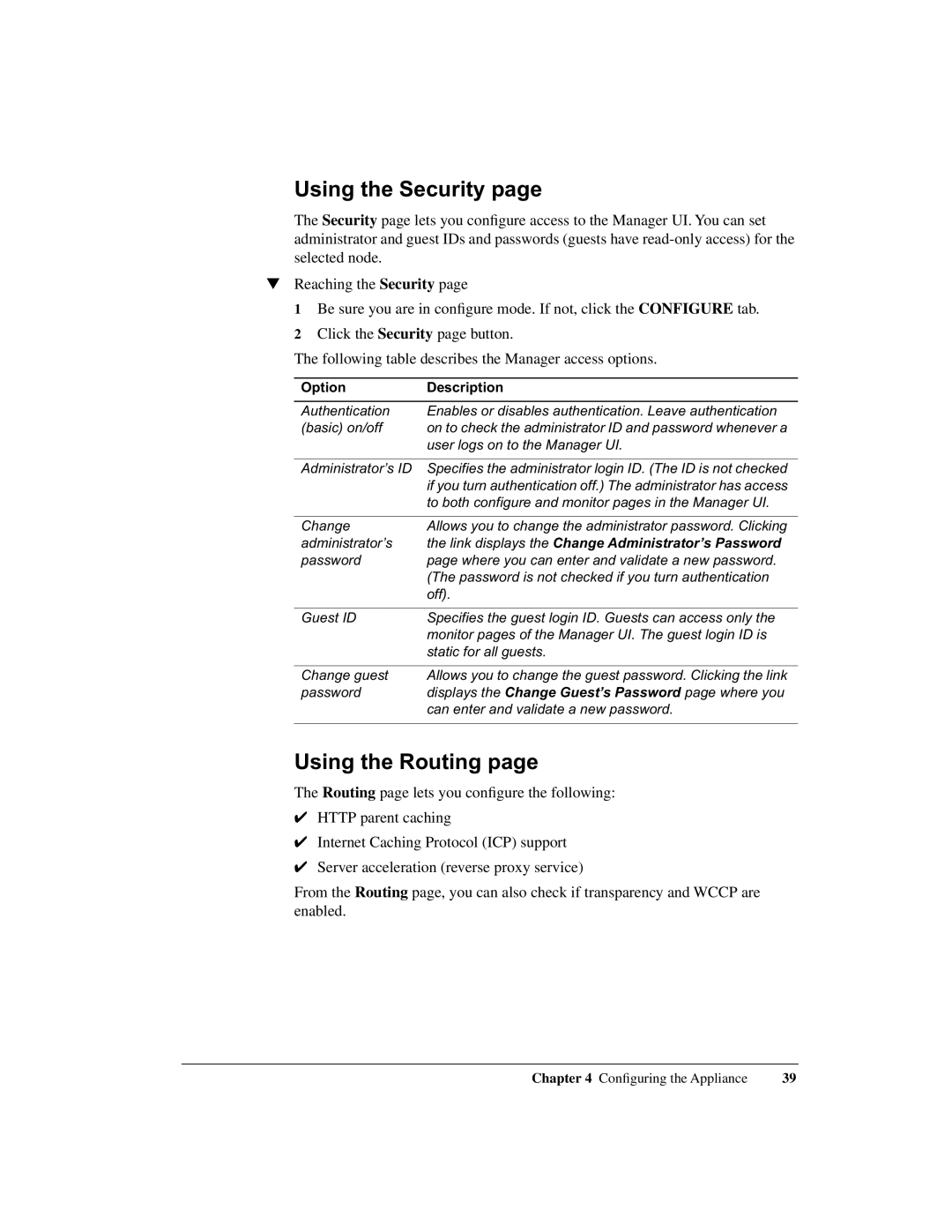
Using the Security page
The Security page lets you configure access to the Manager UI. You can set administrator and guest IDs and passwords (guests have
▼Reaching the Security page
1 Be sure you are in configure mode. If not, click the CONFIGURE tab. 2 Click the Security page button.
The following table describes the Manager access options.
Option | Description |
|
|
Authentication | Enables or disables authentication. Leave authentication |
(basic) on/off | on to check the administrator ID and password whenever a |
| user logs on to the Manager UI. |
|
|
Administrator’s ID | Specifies the administrator login ID. (The ID is not checked |
| if you turn authentication off.) The administrator has access |
| to both configure and monitor pages in the Manager UI. |
|
|
Change | Allows you to change the administrator password. Clicking |
administrator’s | the link displays the Change Administrator’s Password |
password | page where you can enter and validate a new password. |
| (The password is not checked if you turn authentication |
| off). |
|
|
Guest ID | Specifies the guest login ID. Guests can access only the |
| monitor pages of the Manager UI. The guest login ID is |
| static for all guests. |
|
|
Change guest | Allows you to change the guest password. Clicking the link |
password | displays the Change Guest’s Password page where you |
| can enter and validate a new password. |
|
|
Using the Routing page
The Routing page lets you configure the following:
✔HTTP parent caching
✔Internet Caching Protocol (ICP) support
✔Server acceleration (reverse proxy service)
From the Routing page, you can also check if transparency and WCCP are enabled.
Chapter 4 Configuring the Appliance | 39 |
